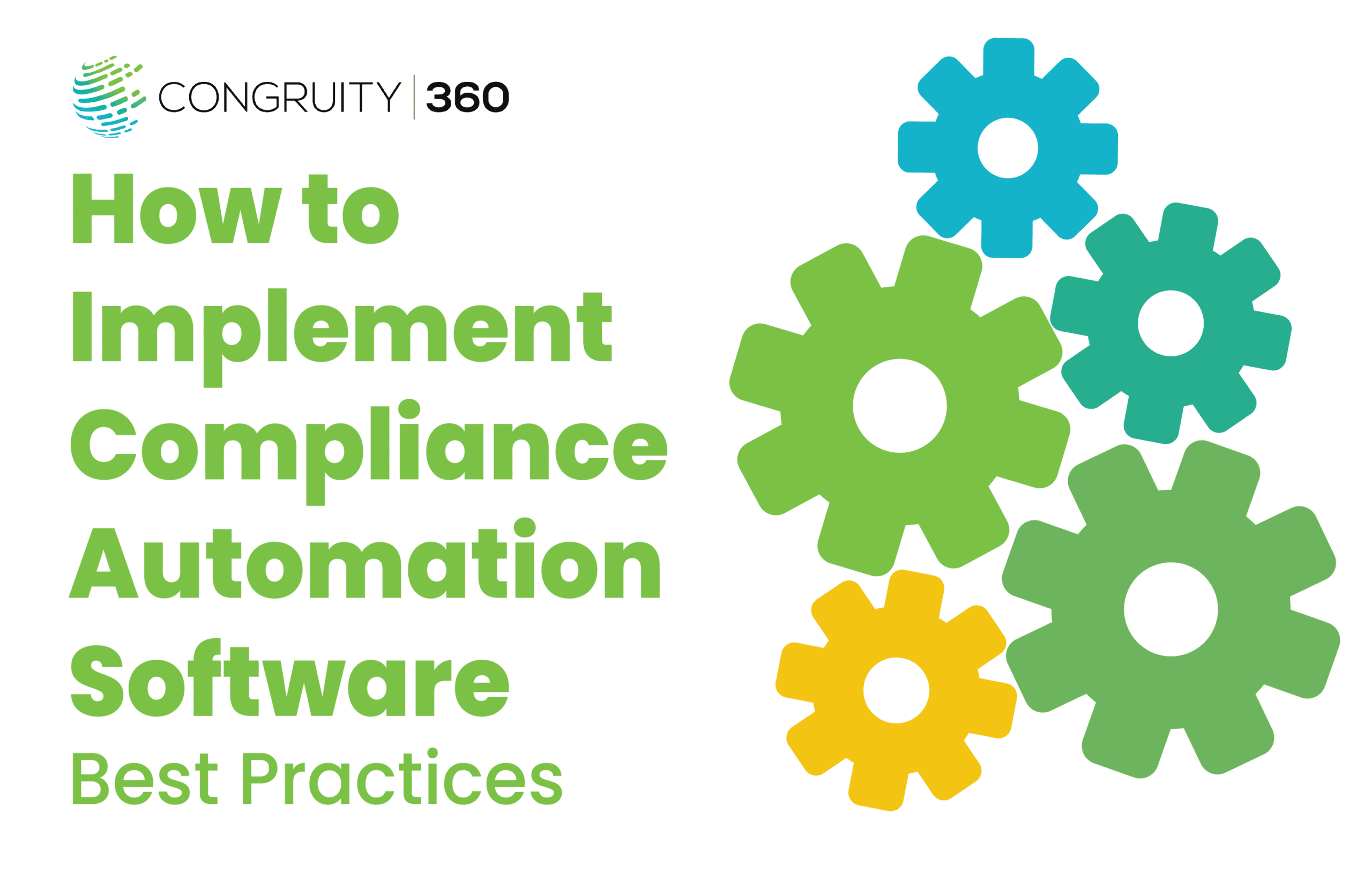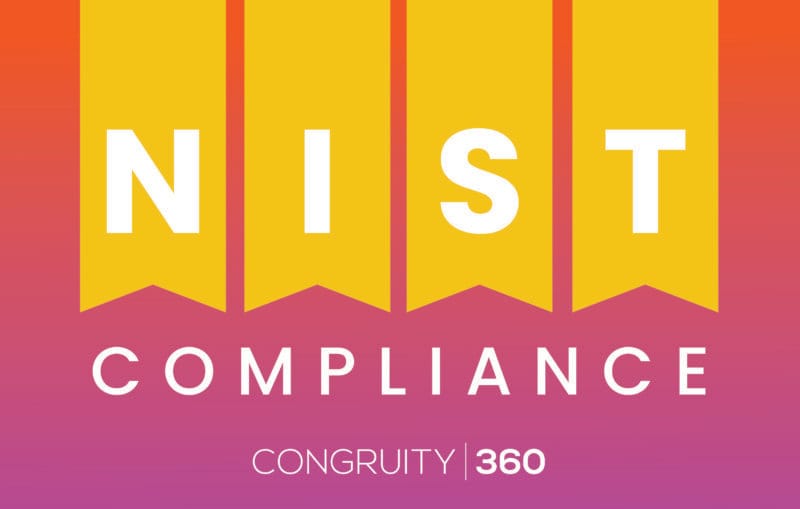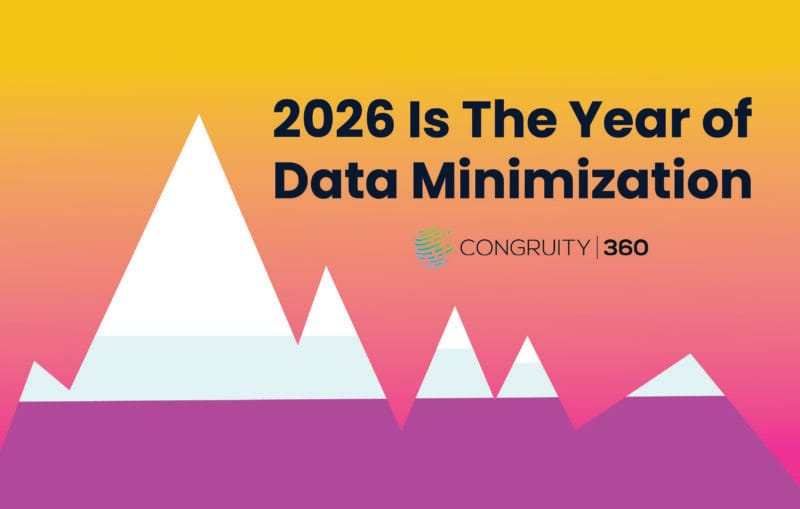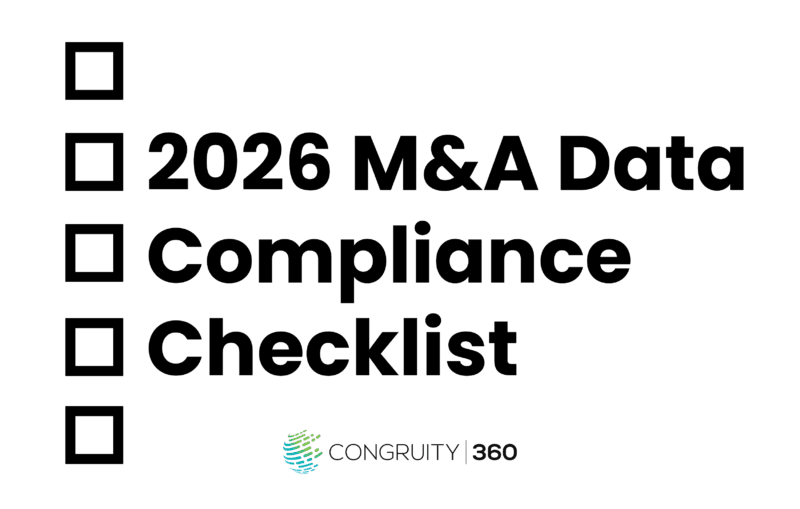Regulatory compliance has evolved from a periodic checkbox exercise to a continuous, strategic imperative. With regulations like GDPR, CCPA, and HIPAA becoming increasingly complex, manual compliance processes can no longer scale to meet enterprise demands. Compliance automation software represents a fundamental shift toward proactive governance, enabling organizations to maintain regulatory readiness while reducing operational overhead. This guide outlines the essential steps to identify requirements, select appropriate solutions, and maintain compliance in complex regulatory environments.
Explore how Congruity360’s intelligent data platform can address your compliance needs.
Identify Your Primary Regulatory Requirements
Establishing a clear understanding of your core compliance obligations forms the foundation of any effective automation strategy. Organizations typically face multiple regulatory frameworks simultaneously—healthcare entities must navigate HIPAA requirements while potentially addressing GDPR for European customers, and financial institutions balance SOX compliance with emerging state privacy laws. This regulatory complexity can feel overwhelming, but addressing these requirements systematically builds a coherent compliance foundation.
Compliance automation software reduces the repetitive tasks associated with manual oversight, allowing your team to focus on strategic governance initiatives rather than administrative burden. The key lies in mapping your specific regulatory landscape before implementing technological solutions.
Ongoing Regulatory Updates
Regulations continuously evolve, with new requirements emerging regularly. The New York City Consumer Credit Reporting (NYCCCR) law exemplifies how quickly compliance landscapes can shift, introducing additional data handling requirements for organizations operating in specific jurisdictions. Missing crucial regulatory updates poses significant operational and financial risks.
Automation provides real-time monitoring capabilities that address this challenge directly. Consider these best practices for staying current:
- Monitor official regulatory portals through automated feeds and alerts
- Configure compliance software triggers for each applicable regulation’s changes
- Establish notification workflows that immediately flag policy updates
Learn how NYCCCR compliance is streamlined for deeper insights into managing evolving regulatory requirements.
Example: A healthcare organization implementing HIPAA policies can receive instant notifications when new federal guidelines are introduced, ensuring swift adjustments to data handling procedures without manual monitoring.
Build an Automated Compliance Framework
Transitioning from regulatory identification to framework implementation requires establishing automated governance processes that provide transparency and operational efficiency. Manual compliance monitoring often creates visibility gaps, leaving organizations uncertain about their current compliance status. Automation eliminates these blind spots while fostering systematic accountability.
Key Steps to Implement Compliance automation software
Selecting appropriate compliance automation software requires careful evaluation of integration capabilities, feature sets, and return on investment potential. Your software should seamlessly integrate with existing data repositories and operational workflows without disrupting business processes. Resource allocation becomes more predictable when automation handles routine compliance tasks.
Essential evaluation criteria include:
- Integration compatibility with current data management systems and tools
- Automated classification capabilities for sensitive data identification and categorization
- Built-in compliance reporting features that generate audit-ready documentation
Explore the Comply360 platform for managing regulations for a comprehensive solution overview.
Example: A financial organization adopting new compliance software can automatically scan stored documents for personally identifiable information (PII) and apply appropriate encryption policies based on predefined rules, eliminating manual document review processes.
Schedule a consultation to investigate our AI governance approach to compliance, exploring how artificial intelligence enhances regulatory oversight capabilities.
Monitor, Report, and Optimize Compliance Workflows
Continuous monitoring and reporting capabilities transform compliance from reactive to proactive management. Real-time visibility into compliance status provides the confidence that comes from knowing your organization’s regulatory posture at any moment. Automated reporting mechanisms address common questions about compliance readiness: What reporting mechanisms are key for automated compliance? How can organizations maintain audit readiness without constant manual oversight?
Recommended Tracking and Optimization Methods
Automated alerts and dashboards provide centralized compliance visibility while reducing manual oversight requirements. These systems should store historical compliance data for audit readiness and trend analysis. Establishing routine compliance audits through automated workflows ensures consistent evaluation without resource-intensive manual processes.
Consider these implementation strategies:
- Schedule automated compliance audits that run according to regulatory requirements
- Maintain historical compliance data repositories for audit readiness and trend analysis
- Implement real-time dashboards that provide immediate compliance status visibility
Enhance your data security and compliance posture for advanced guidance on security compliance best practices.
Example: Organizations using real-time compliance dashboards can immediately identify potential infractions, enabling prompt corrective action that limits non-compliance penalty risks.
Review HIPAA compliance tips and guidelines to see how automated monitoring eliminates compliance guesswork.
Understand the differences between DSPM, GRC, and UDM to see how these approaches affect ongoing compliance management strategies.
Streamlined Path to Regulatory Excellence
A systematic approach to compliance automation software directly addresses the pain points that strategic data leaders face: limited visibility, resource constraints, and evolving regulatory requirements. Building a tailored, efficient, and continuously optimized regulatory process transforms compliance from operational burden to competitive advantage. The key lies in selecting solutions that integrate seamlessly with existing infrastructure while providing the automation capabilities necessary for scalable governance.
Take the next step in simplifying compliance by exploring the Comply360 platform for managing regulations, where intelligent automation meets comprehensive regulatory oversight.





